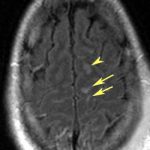In the US, resident work hour restrictions went into effect in 2003, limiting the total number of hours worked per week and the number of consecutive hours without a break. The idea was that fatigue caused errors, which translates into patient complications or worse. Has this panned out? A number of previous publications have found no change; only a few have shown some benefit.
Researchers at Massachusetts General Hospital decided to apply the acid test to this theory. They selected a group of patients who were critically ill and challenging to care for, taken care of by a group of residents who had long work hours and were involved in long operative cases. The AHRQ National Inpatient Sampling Database was studied, comparing the outcomes of neurotrauma patients before and after work hours were initiated and in teaching and non-teaching centers.
A huge number of records were analyzed (40,000 before work hours restrictions, 67,000 after). The findings were intriguing:
- The overall complication rate was the same before and after restrictions (1.2%)
- The complication rate was 25% higher in teaching hospitals after restrictions took effect. It appears that this also correlated with higher hospital charges after restrictions.
- Logistic regression was used to figure out whether this difference was from duty hours or just from the involvement of residents in care. Only duty hours were significant in this analysis.
- If injury severity was included in the analysis, there were no differences in complications at all
- There were no differences in mortality rates between any of the groups
Bottom line: Yes, fatigue is bad (see my previous posts below). But here is another (correlation) study that doesn’t bear out the original reasons to restrict resident work hours. In actuality, complications and charges increased after the restrictions went into effect. It is possible that the checks and balances in the system were effective in protecting patients from adverse outcomes. Could the changes in this study be due to staffing changes to meet the restrictions, which results in chronic understaffing which undercuts those checks and balances? Studies of this type can’t tell us that. And unfortunately, restrictions in the US are not going to go away, they’ll probably get worse.
Related posts:
- Fatigue week I: Sleep deprivation
- Fatigue week II: Sleep quality in EMS
- Fatigue week III: Trauma surgeons
- Fatigue week IV: Zoning out
- Fatigue week V: Final thoughts
Reference: Higher Complications and No Improvement in Mortality in the ACGME Resident Duty-Hour Restriction Era: An Analysis of More Than 107?000 Neurosurgical Trauma Patients in the Nationwide Inpatient Sample Database. Neurosurgery 70(6):1369-1382, 2012.

